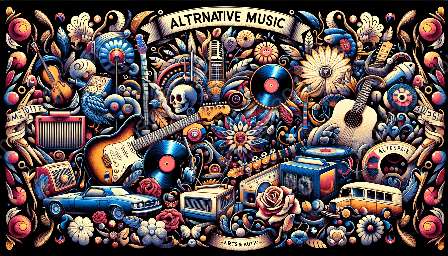Blues music has a rich history and has been adapted for various instruments to create unique sounds that cater to different musical tastes and preferences. In this in-depth exploration, we will delve into the diverse adaptations of blues for different instruments and examine how the genre intersects with various music genres.
Origins of Blues Music
The origins of blues music can be traced back to the African-American communities in the southern United States in the late 19th century. Influenced by African musical traditions, spirituals, work songs, and the folk music of European settlers, blues music emerged as a distinct genre characterized by its melancholic lyrics and soulful melodies.
Initially, blues music was primarily associated with vocal performances accompanied by simple instruments such as the guitar and harmonica. However, as the genre gained popularity and underwent various adaptations, it began to attract the attention of musicians playing different instruments.
Adaptations for Guitar
The guitar has played a pivotal role in the evolution of blues music. From the early acoustic blues of the Mississippi Delta to the electric blues of Chicago, the guitar has been a central instrument in shaping the sound of the blues. Guitarists have adapted their playing styles to bring out the distinctive emotional depth of blues music, often using techniques such as slide guitar and fingerpicking to create the genre's signature sound.
Furthermore, the electric guitar revolutionized the blues genre, giving rise to influential artists such as B.B. King, Muddy Waters, and John Lee Hooker, all of whom showcased the instrument's expressive capabilities in their iconic blues performances.
Adaptations for Harmonica
The harmonica, also known as the blues harp, has been another instrument closely associated with blues music. Its portability and ability to produce soulful and mournful tones made it a perfect fit for the blues genre. Harmonica players such as Little Walter and Sonny Boy Williamson II showcased the instrument's versatility, contributing to the development of a distinctive blues harmonica sound.
Blues harmonica is often characterized by its use of bending and overblowing techniques, which allow players to produce microtonal variations and expressive phrasing, adding depth and emotion to their performances.
Adaptations for Piano
The piano has also been widely adapted to play blues music, particularly in the subgenre known as boogie-woogie. Originating in the early 20th century, boogie-woogie piano playing often features fast-paced, rhythmic patterns that create an infectious groove, making it a popular choice for blues performances.
Artists such as Albert Ammons, Meade Lux Lewis, and Pete Johnson were pioneers of boogie-woogie piano, showcasing the instrument's ability to capture the energetic and lively spirit of blues music.
Adaptations for Saxophone
While the saxophone is more commonly associated with jazz music, it has also found its place in the world of blues. Blues saxophonists such as King Curtis and Junior Walker brought a soulful and expressive quality to the genre, elevating blues performances with their emotive saxophone solos.
The saxophone's ability to convey raw emotion and intensity through its rich and resonant tones added a new dimension to blues music, expanding its sonic palette and broadening its appeal to a wider audience.
Intersection with Other Music Genres
Blues music has intersected with various other music genres, giving rise to exciting fusions and collaborations. From blues-rock and blues-funk to blues-jazz and blues-country, the genre has continually evolved by incorporating elements from different musical styles.
Blues-rock, in particular, emerged as a popular adaptation of blues music, blending the raw, emotive essence of blues with the high-energy and amplified sound of rock music. Artists like Eric Clapton, Led Zeppelin, and Cream played pivotal roles in popularizing blues-rock, showcasing how the genre could be adapted and reimagined to appeal to a broader audience.
Furthermore, the influence of blues can be felt in genres such as jazz, country, and funk, as musicians and bands continue to explore the possibilities of integrating blues elements into their compositions and performances.
Evolution and Innovation
As blues music continues to evolve, artists are constantly innovating and pushing the boundaries of how the genre can be adapted for different instruments. From the emergence of electric blues to contemporary blues fusion, the genre remains a vibrant and dynamic form of musical expression.
Whether it's through the soulful wail of a blues guitar, the plaintive cry of a blues harmonica, or the infectious groove of a boogie-woogie piano, the adaptations of blues for different instruments highlight the genre's enduring capacity for emotional resonance and creative exploration.
Conclusion
In conclusion, the adaptations of blues music for different instruments have led to a diverse array of sounds and styles that continue to captivate audiences worldwide. The genre's intersection with various music genres has further enriched its musical landscape, ensuring that blues music remains a relevant and influential force in the world of music.
Explore the various adaptations of blues music for different instruments and immerse yourself in the timeless allure of this captivating genre.












































